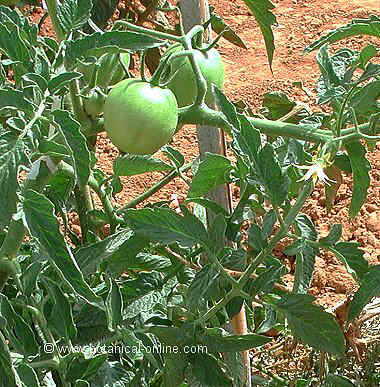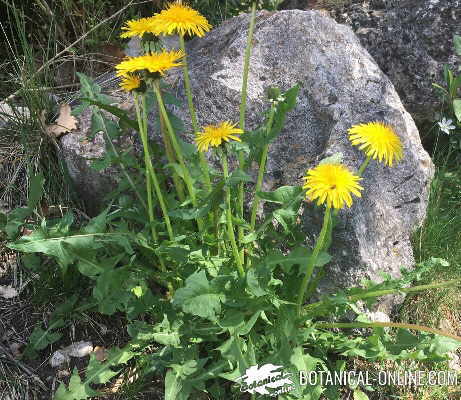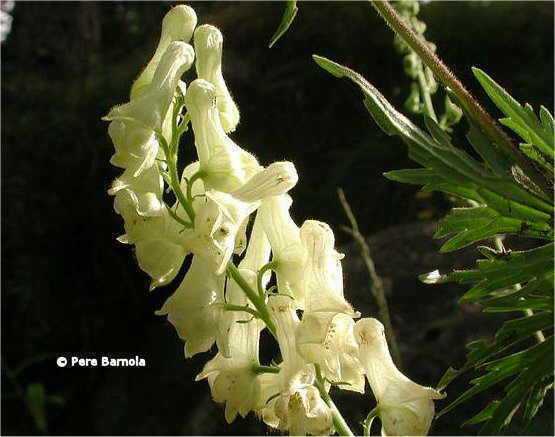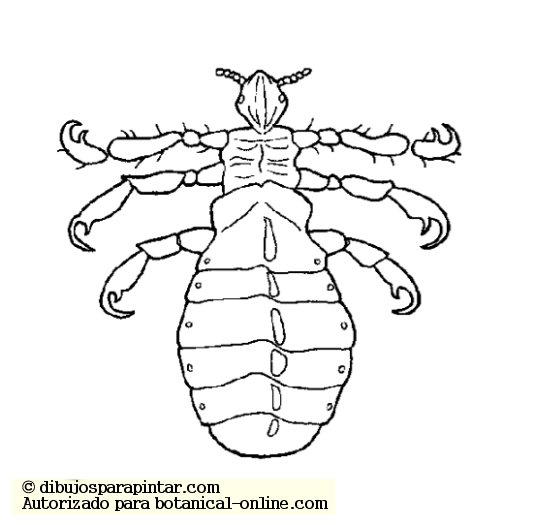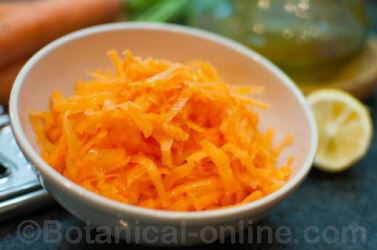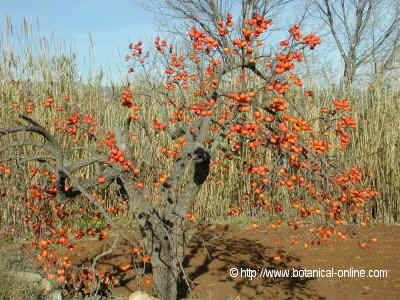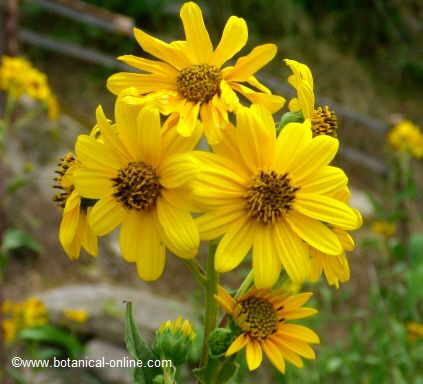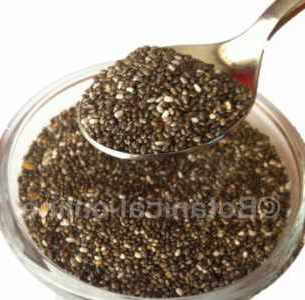Contents
How to grow red cedar
 Characteristics of Juniperus virginiana
Characteristics of Juniperus virginiana
Tree or shrub of the Cupressaceae FAMILY up to 30 meters of height, although more usually between 15 and 18 meters and sometimes does not exceed the height of a shrub. It is characterized by columnar or conical shape. Their trunks are short and have a reddish-brown bark that cracks easily in narrow bands. Its leaves have needle-shaped juvenile and mature form of flake. All of them of grey-green color. The fruits are small and dark bluish purple.
Habitat: It comes from North America. There are two varieties:
- Virginiana Juniperus var. virginiana. Variety which grows in the eastern part of North America, with very sharp leaves on its end and reddish brown bark.
- Virginiana Juniperus var. silicicola. A more southern species with blunt leaves and bark dull orange brown.
Within the cultivated varieties we have to distinguish:
- Juniperus virginiana “Glauca”. with bluish-green foliage. Reaches about 8 feet high.
- Juniperus virginiana “Hetzii. ” with gray-green leaves. Smaller than the previous (3.5 meters)
- Juniperus virginiana “Sulphur Spray” = Juniperus chinensis “Sulphur Spray. ” yellow-green leaves when young that become more gray as they mature.
- Juniperus virginiana “Canaertii” Especially compact and pyramidal.
- Juniperus virginiana “Hillspire” Noted for its bright green color.
- Juniperus virginiana “elegantissima” It shows the extremes of young twigs yellow.
- Juniperus virginiana “Skyrocket” very narrow columnar in appearance and leaves, silvery blue-green.
 Red cedar. Irrigation
Red cedar. Irrigation
Moderate irrigation, resists the drought very well. When the tree is well established. With regular rainfall, it will not need watering. In very dry years, especially in the warm seasons, it can be watered every 15 or 20 days, making sure the soil is dry before applying the new irrigation.
 Red cedar. Uses
Red cedar. Uses
Highly resistant to pollution and fumes from cars so it is recommended for planting in the medians of highways or roads or at the sides of parkings.
It is highly resistant to salinity, so it can be used in places near the coast. Not used much as a street tree, although it has recently been planted in some places. To suit this purpose you need a proper pruning to remove lower branches and extend the trunk, which, under natural conditions is too short to allow passage underneath.
Its use near apple orchards is discouraged or even prohibited in some places because it is the host of the “cedar-apple rust” disease.
The abundant use of this plant, like other plants of the same family, such as cypresses, white cedar or savin, is due to their resistance to pests, diseases, their ability to withstand pollution, environmental and soil dryness and tolerance to different soil types and its rapid growth.
The red cedar is especially suitable for use as “windscreen.” Between 1932 and 1939 in the North American plains occurred an atmospheric phenomenon known as Dustbowl. During these years severe droughts were originated, strong winds accompanied by dust, which ravaged the land and forced many settlers from the plains lying between the Gulf of Mexico and Canada, to migrate to other places.
This phenomenon was aggravated as a result of poor agricultural land management over many years before the phenomenon, especially by excessive tillage of these plains that eliminated the herbs able to hold the land.
The government proposed several measures to address this disaster. These included the initiative to plant many wind screens made with red cedar hedges. The capacity of this plant to withstand adverse conditions (heat, cold, wind, dryness, etc), its adaptability to poor, sandy, rocky or clay soils, and the ability to grow very well when planted close together, suggests the use of this plant to curb the power of wind. For the same reason, it is usually planted in fences, gates or next to houses and fields.
In some states of the United States it is used as a Christmas plant.
The increased use of these plants as ornamental ones has contributed to the increase in cases of hay fever.
 Red cedar. Environment and exposure
Red cedar. Environment and exposure
It can be planted in full sun or partial shade.
It is very resistant to frost, except when young. In this case, it needs some protection against the cold.
Junipers generally need to have plenty of free space around it, given the large capacity horizontal extension of their roots and the need to have enough light. However, the red cedar is adapted to a cultivation when samples are close together. This makes it particularly suitable where you want to use for making hedges, fences and windscreens.
 Red cedar. Reproduction and care
Red cedar. Reproduction and care
It is possible to reproduce it by seeds. The seeds are collected in autumn and should be planted in spring, after having undergone a process of cold stratification for 4 months. The germination does not always happen and when it does, the growth is very slow, so it can take up to 3 years to have a proper seedling to be transplanted to their final destination.
Another form of reproduction is by cuttings. It can be performed in winter from cuttings cut in the same season. To encourage the roots, we can wet them with hormones for a few hours. Cuttings can be planted on soil, made of mixed perlite and peat and kept within a temperature range between 15 and 27º C. Keep humidity and light high so that they can root well.
Cuttings can also be carried out in summer from branches obtained during this season. In this case you do not need protection from cold.
Another way to play is by layering in winter. Plant them when rooted in summer, but are slow to grow. Best left to grow in pots the first year and then transplant them.
Junipers need to be pruned from time to time to maintain an appropriate size. They can also be trimmed if required to give a more pleasant or when used as hedges. Pruning can be done in spring or autumn.
 Red cedar. Soil and fertilization
Red cedar. Soil and fertilization
Red cedars prefer a limestone terrain with good drainage, but are they able to adapt to most soils (acidic, alkaline, clay, limestone)
This tree has a great ability to remove weeds and other plants that could compete with it. Among the strategies it uses, the best one is the shadow cast by its wide and dense canopy that blocks out the light needed for other plants to grow under it.
Also the leaves, falling on the ground, increase pH and make it more alkaline. It was also found that this plant can exhaust considerably the reserves of nitrogen and carbon from the soil, and you should take this into account if you intend to plant any kind around or when you want to remove the crop to plant other species. In this case it may be necessary to improve soil characteristics.
Given the large capacity of the roots to spread along the ground, these trees are able to exploit the minerals that are available, so you do not need to pay much attention on fertilizer. However, it has been found that adding organic matter every two or three years is reflected in a greater luster of leaves and greater resistance to diseases.
Red cedar. Diseases
Juniper rusts: It is the main disease that affects the appearance of mushrooms in spring. The main fungus is Gymnosporangium juniperi-virginianae that causes a disease known as “cedar-apple rust.” This disease is manifested in the form of galls that appear on the leaves of this tree.
To be capable of producing these galls, junipers are infected with the spores of this fungus from another host. The spores of this fungus usually develop on leaves, fruits and young twigs of host plants (apple, crabapple), producing yellow spots that change to orange, surrounded by a red border.
The infection occurs in late summer or early fall. In the next summer, you can see the formation of these galls on infected juniper leaves. Throughout the summer and autumn, they increase in size and acquire a kidney-shaped and greenish brown color. Upon arrival the following spring, the galls produce filaments called telial, a series of yellow filamentous growths that develop from the gills. Telial filaments produce spores that are the ones that, carried by the wind, infect another host
This is the disease that causes most damage to apple tree juniper. Other rusts that may affect it are the “cedar hawthorn rust” caused by the fungus Gymnosporangium globosum in which this fungus has thorns and other guests. The cedar-quince rust, caused by the fungus Gymnosporangium clavipes, is guest to many members of the family Rosaceae, including apple, crabapple, quince, hawthorn, rowan, etc.
Other fungi that may affect it are Phomopsis juniperovora and Kabatina juniperi. Both cause death especially in younger branches. Both are diseases that produce similar symptoms. The second takes place in early spring, while the former can do so at any time of plant growth.
The treatment of these diseases is performed by removing and burning infected branches and implementation of an appropriate fungicide. Among the most suitable protection measures is the selection of disease resistant samples and the spacing of the host trees.
One should be particularly careful monitoring it in hot and humid years.
Pests of juniper: Among the pests the most common ones are mealybugs and spider mites.
![]() More information on red cedar
More information on red cedar

 Red cedar. Irrigation
Red cedar. Irrigation